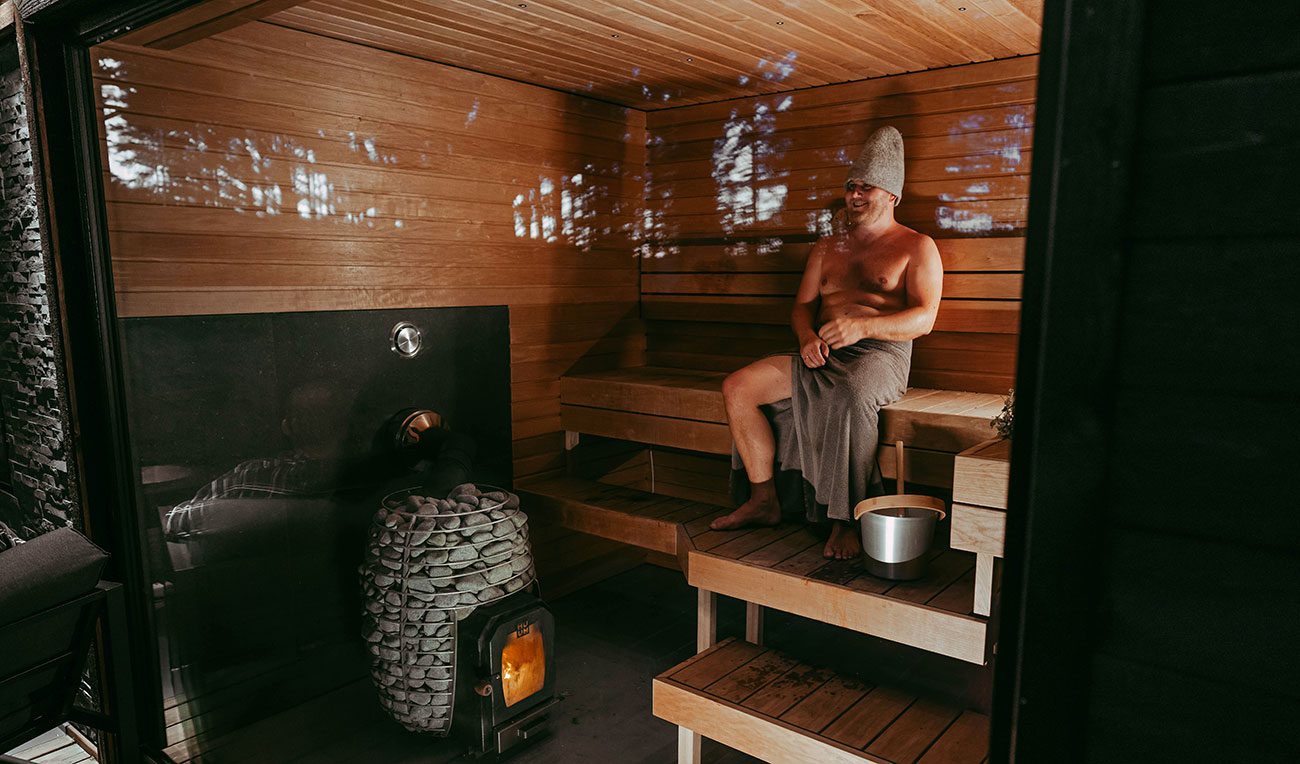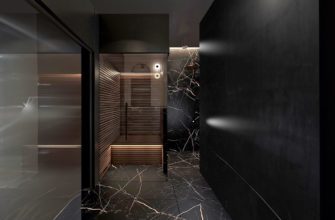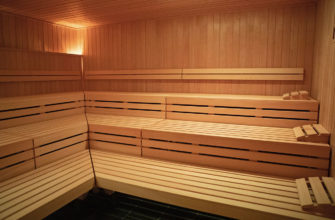Choosing the right sauna stove is crucial, as it’s the heart of your sauna, setting the tone for heat, humidity, and the overall experience. The type of sauna, its size, and your personal preferences for heat source (wood-burning or electric) are key considerations in this decision.
In this guide, we’ll explore the pros and cons of wood-burning and electric stoves, offer tips for controlling these stoves, and provide insights into calculating your sauna’s volume to help you select the most suitable power for your sauna stove. Your journey towards an optimal sauna experience begins with understanding these fundamental aspects.
- Wood-Burning Sauna Stove: Pros and Cons
- Benefits
- Drawbacks
- Controlling Temperature and Humidity in a Wood-Burning Stove
- Temperature Control
- Humidity Control
- Electric Sauna heater: Pros and Cons
- Definition and Working Principle of an Electric Sauna heater
- Advantages
- Disadvantages
- Managing an Electric Sauna heater
- Wood-Burning or Electric heater: What to Choose?
- How to Calculate Sauna Volume?
- Choosing the Right Sauna Stove: Power
- Heater for dry sauna and wet sauna
- Characteristics of an excellent sauna stove
- Stones for sauna ovens
Wood-Burning Sauna Stove: Pros and Cons
As an ardent proponent of traditional Finnish saunas, I personally lean towards wood-burning stoves. There’s an indescribable charm in the age-old ritual of stoking the fire and a satisfaction in the heat it produces that feels more organic and enveloping.
A wood-burning sauna stove operates on the principle of heating stones with the fire from burning wood. This heat is then gradually released into the sauna room. It offers a traditional experience that has been savored by sauna enthusiasts for centuries.
Benefits
One of the significant advantages of wood-burning stoves is the high-quality heat they produce. The heat from a wood-fired sauna is often described as more “gentle” and “softer” than that from electric stoves, creating a more relaxing and enjoyable sauna experience. The wood fire also imparts a delightful aroma that adds to the ambiance of the sauna.

Drawbacks
Despite the allure of wood-burning stoves, they do have a few downsides. Firstly, they require regular maintenance and cleaning, particularly the removal of ash. The installation process is more complex as it involves setting up a chimney for smoke and gas exhaust. Additionally, wood-burning stoves demand a constant supply of wood, which may not be convenient for everyone.
For non-tunnel type stoves, where the fire chamber is located inside the sauna room, there is a risk of smoke filling the room if not properly managed. Also, there’s an inherent fire hazard with wood-burning stoves if they’re not properly installed and maintained. It is crucial to ensure the installation is done correctly and the stove is regularly checked for any potential issues.
Despite these challenges, the authenticity, and richness of the sauna experience delivered by wood-burning stoves make them an appealing choice for many, including myself. The very act of tending the fire becomes part of the relaxation process, offering a connection to the sauna traditions that have been cherished for generations.
Controlling Temperature and Humidity in a Wood-Burning Stove
Adjusting the temperature and humidity in a wood stove is not as complicated as it may seem, but it does require skill.
Temperature Control
You can regulate the heat primarily by adjusting the amount of wood burned; more wood means more heat, and less wood results in a lower temperature. The stove’s damper, which regulates the airflow to the fire, also plays a crucial role in managing the heat.
Humidity Control
Humidity control involves adding water to the heated sauna stones. The resulting steam increases humidity, and the amount of water used can be adjusted to personal preference. Proper ventilation also assists in managing humidity levels.
Mastering these elements requires some practice but ultimately leads to a more enjoyable and personalized sauna experience.
Electric Sauna heater: Pros and Cons
As the owner of an online sauna stove store, I’ve observed a growing preference for electric sauna stoves among customers. Their convenience and simplicity have made them increasingly popular, despite some potential drawbacks.
Definition and Working Principle of an Electric Sauna heater
An electric sauna stove operates by converting electrical energy into heat. The heating elements warm up the sauna rocks, which then radiate heat throughout the sauna room. It’s a straightforward process that requires minimal effort and expertise.
Advantages
The primary advantage of an electric sauna stove is its simplicity. With the flick of a switch or the setting of a timer, you can easily control the temperature and duration of your sauna session. There’s no need for firewood, nor dealing with smoke or ash. This makes electric stoves a neat, smoke-free, and efficient choice for most modern users.
Disadvantages
However, electric sauna stoves come with their own set of downsides. The cost of electricity can be high depending on your location, and the sauna experience might feel less traditional compared to a wood-burning stove. Moreover, installing an electric stove can be complicated and often requires a professional, as it involves dealing with high-voltage electricity.
Ultimately, the choice between a wood-burning and electric sauna stove depends on your preferences and circumstances. If you value simplicity and ease of use over tradition and the tactile involvement of a wood-burning stove, an electric sauna stove could be the ideal choice for you.
Managing an Electric Sauna heater
Electric sauna stoves offer ease of management, thanks to their intuitive control systems. In more budget-friendly models, controls are typically integrated directly into the stove’s body. Higher-end models often feature a separate control panel for added comfort and convenience, although this is usually an additional cost.
These control systems allow for the adjustment of temperature, typically within a range of 70 to 90 degrees Celsius, and often include a timer for automatic shut-off or pre-programmed start times. Some models also include humidity control for a more personalized sauna experience.

If your stove doesn’t have a humidity control feature, you can increase it manually by pouring water on the sauna rocks. This combination of simplicity and control makes electric stoves a preferred choice for those seeking a hassle-free sauna experience.
Wood-Burning or Electric heater: What to Choose?
The choice between a wood-burning and an electric sauna stove ultimately boils down to personal preference, your living situation, and how you envision your sauna experience.
Wood-burning stoves offer a traditional, authentic sauna experience. They provide a high-heat, low-humidity environment, and the aroma of burning wood adds to the ambiance. As a personal fan of wood-burning stoves, I can attest to the unique pleasure they provide. However, they require regular maintenance, a steady supply of wood, and proper ventilation to manage smoke.
On the other hand, electric stoves are the go-to choice for those seeking ease and convenience. They’re simpler to use and maintain, need no firewood, and provide better control over temperature and humidity. My online store’s sales data reflect this trend, with electric stoves currently outselling wood-burning ones.
In the end, consider your personal preferences, available space, ease of use, maintenance needs, and cost before making your choice. Both types of stoves can provide a fulfilling sauna experience when chosen wisely.
How to Calculate Sauna Volume?
Understanding the volume of your sauna is crucial to choosing the right stove. The stove’s power output must be sufficient to heat the entire sauna efficiently.
- Measure the length, width, and height of your sauna in meters. Be sure to measure from the interior walls, floor, and ceiling.
- Calculate the basic volume. Multiply the length, width, and height together. This will give you the basic volume of your sauna in cubic meters. For example, if your sauna is 2m long, 2m wide, and 2m high, the basic volume is 2m * 2m * 2m = 8 cubic meters.
- Account for non-insulated surfaces. If your sauna has non-insulated surfaces such as windows or doors, they will lose heat more quickly. For every square meter of non-insulated surfaces, add 1.2 cubic meters to the basic volume. If you have a window that is 1m x 1m (1 square meter), you would add 1.2 cubic meters to your total volume.
Adding these numbers together will give you the total volume of your sauna. This is the number you will use when determining the power output required from your sauna stove. Remember, for an efficient and effective heating, always choose a stove that matches the calculated sauna volume.
Choosing the Right Sauna Stove: Power
The power of the sauna stove, typically measured in kilowatts (kW), is a vital consideration when choosing the perfect fit for your sauna.
Manufacturers usually provide a recommended range of sauna volumes for each of their stove models. For instance, a 6 kW stove might be suitable for saunas with a volume of 5 to 8 cubic meters.
However, it’s crucial to realize that the stove shouldn’t always operate at its maximum output. It’s often more beneficial to opt for a stove with slightly higher power than required. For example, if your sauna’s volume is 8 cubic meters, it’s better to choose a stove designed for saunas in the range of 8 to 10 kW, rather than 5 to 8 kW. By doing this, the stove won’t be working at its limit, which contributes to a longer lifespan of the device and a better sauna experience.
Heater for dry sauna and wet sauna
When choosing a sauna stove, it’s important to consider whether you’ll be using it for a dry or wet sauna. In our understanding, a wet sauna is the same space as a dry sauna, but with different temperature and humidity levels. A classic Finnish sauna can be used for both, but it’s important to note that a wet sauna is not the same as a steam room, which is constructed differently.
Different types of saunas require different characteristics in their stoves. For a dry sauna, a stove with efficient and fast heating capabilities is ideal. For a wet sauna, a stove that can handle higher humidity levels and lower temperatures is more appropriate. It’s important to choose a stove that’s designed for the type of sauna you’ll be using to ensure the best experience.

Characteristics of an excellent sauna stove
- Efficient and quick heating
- Economical use of energy
- Proper power output for the size of the sauna room
- Easy to use
- Durable and long-lasting
- Safe to use with protection against overheating
- High-quality materials and construction for the heating elements
Stones for sauna ovens
In conclusion, the stones in the sauna heater play an important role in the comfort of the sauna. There are different types of stones that are suitable for use in the stove, including volcanic stones, peridotite, olivine, and others. Proper stone placement in the sauna heater is also important to ensure optimal heat distribution. Place small stones at the bottom, then medium stones, and large stones at the top. If you use the sauna heater a lot, it is recommended to change the stones once a year.
For more information on the types of stones and tips on choosing the right ones for your stove, as well as tips on caring for them, check out our other article on sauna stones. We hope this guide has helped you choose the perfect sauna stove for your needs, and that you will enjoy many relaxing and rejuvenating sessions in your sauna.








